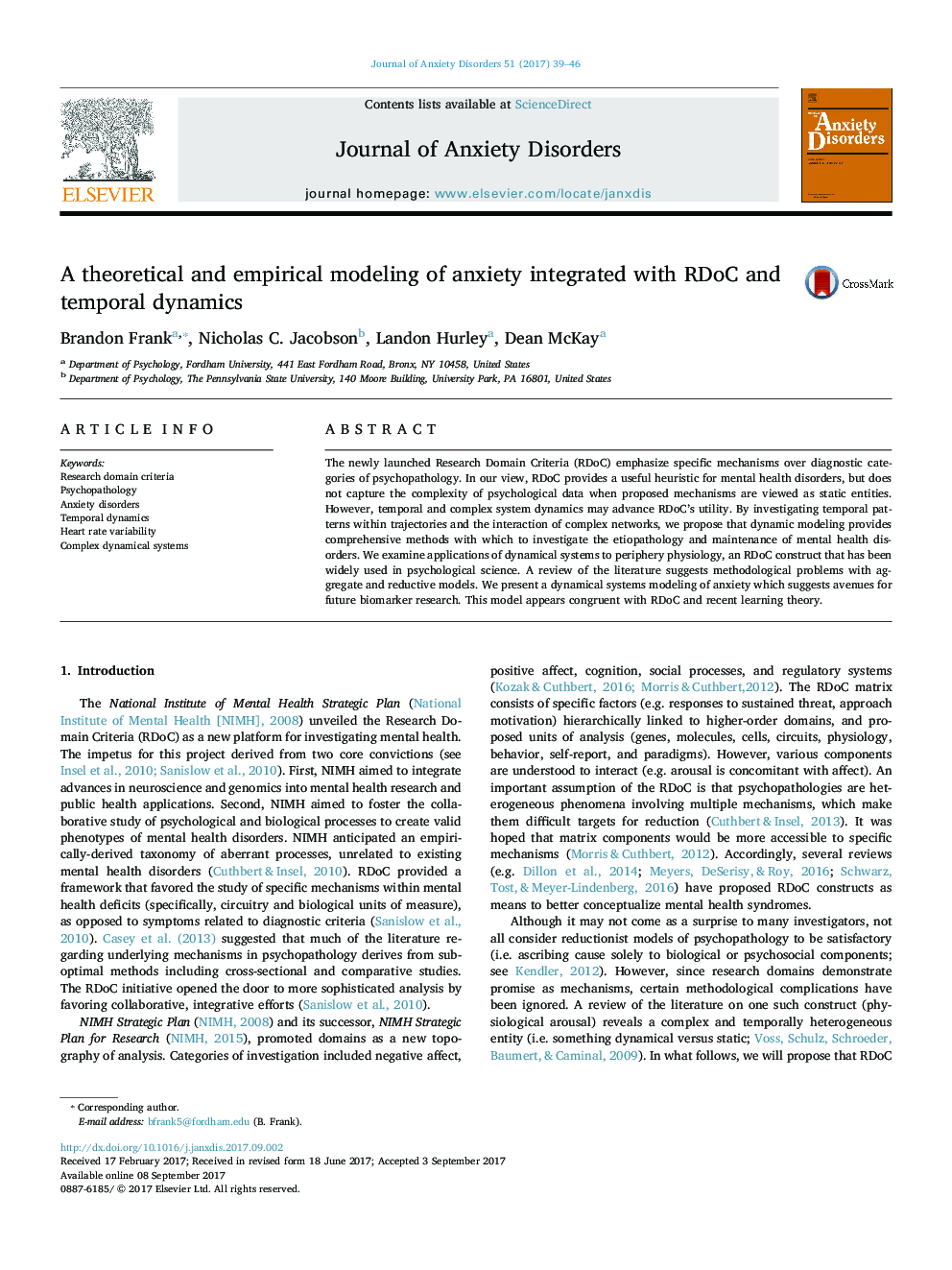| Article ID | Journal | Published Year | Pages | File Type |
|---|---|---|---|---|
| 5038852 | Journal of Anxiety Disorders | 2017 | 8 Pages |
â¢RDoC constructs best describe psychopathology when considered as time-series phenomena.â¢Dynamical systems provide methods to model the complex processes by which RDoC constructs contribute to psychopathology.â¢A dynamical conceptualization of anxiety is congruent with RDoC and recent learning theory.
The newly launched Research Domain Criteria (RDoC) emphasize specific mechanisms over diagnostic categories of psychopathology. In our view, RDoC provides a useful heuristic for mental health disorders, but does not capture the complexity of psychological data when proposed mechanisms are viewed as static entities. However, temporal and complex system dynamics may advance RDoC's utility. By investigating temporal patterns within trajectories and the interaction of complex networks, we propose that dynamic modeling provides comprehensive methods with which to investigate the etiopathology and maintenance of mental health disorders. We examine applications of dynamical systems to periphery physiology, an RDoC construct that has been widely used in psychological science. A review of the literature suggests methodological problems with aggregate and reductive models. We present a dynamical systems modeling of anxiety which suggests avenues for future biomarker research. This model appears congruent with RDoC and recent learning theory.
